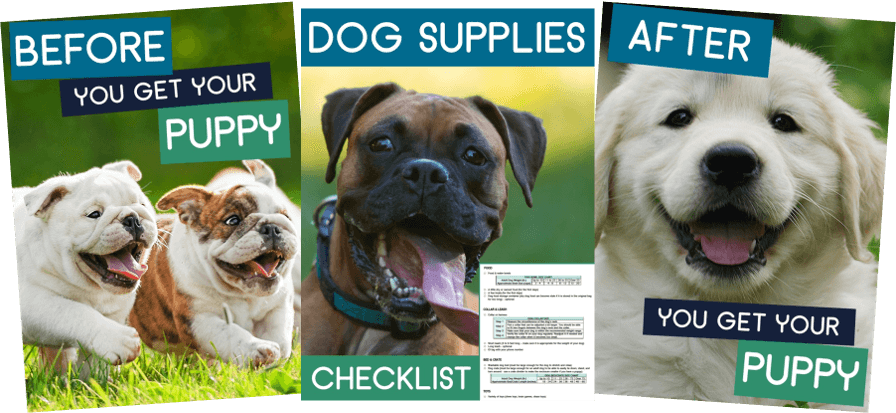Essential costs to consider for a hypoallergenic dog
Before going into details about the cost for 23 hypoallergenic dog breeds, here is a quick explanation of the expenses considered essentials in this article.
We have accounted for the cost of acquiring a dog. In the US, a puppy will cost $1,300 on average ($1,700 for the hypoallergenic dog breeds below), and most will fall in the $500 to $2,500 range. It could be much more for quality show purebred dogs with a prestigious bloodline. On the other hand, adoption is much cheaper and generally costs $50 to $500.
If you want to know more about the price of puppies in the US or compare this breed with 150 others, check our puppy prices article based on the analysis of close to 50,000 ads (for 151 different breeds).
Any owner will need to purchase dog supplies for their dog. The bigger the dog, the more expensive it gets. We have considered prices for the following items in this research: bowls, leash, collar with ID tag, bed and crate, poop bags and scooper, training pads, odor removal spray, toys, first-aid kit, brush, shampoo, tooth-brushing kit, and toenail clippers. Some owners could need more supplies. Although the initial investment is higher, some items will need to be replenished or replaced, and an owner will have to buy dog supplies every year.
Check our Dog Supplies Guide and get tips to choose the right items for you and your dog (bowls, collar, leash, bed and crate size, etc.). Learn everything about costs, and find the best products available.
Every dog would benefit from training. Although some breeds tend to be more docile, each dog is very different, and training needs must be assessed on a case-by-case basis. Whether the owner trains the dog himself or hires a professional for group or private lessons, a dog should always be properly socialized, know basic training commands, be potty and crate trained. Positive reinforcement training methods will give the best results.
It is recommended that a puppy goes to the vet at least three times during the first year and an adult dog at least once every year. These appointments are for a physical checkup, necessary vaccines, and any recommended examination or test. Veterinarians like Dr. Brooks, DVM, also recommend using heartworm, flea, and tick prevention medication to reduce the risks for the dog to develop a dangerous illness. The bigger the dog, the more expensive it gets.
Read our article titled a veterinarian explains medical costs for a dog to learn more and get tips to save on vet expenses.
There are so many types of food, diets, and brands that it can be overwhelming. To establish the costs in this article, we have considered some of the most popular dry food brands as it remains the most common dog food type. In general, bigger dogs will need to eat more, but other factors such as age and activity level will also have an impact.
Treats can easily be more expensive than food if given daily. There are many reasons to give a dog treat: to supplement his diet, stimulate him, help with training, etc.
When it comes to food and treats, prices are all over the place. Some brands are very accessible, while some premium quality products can be considerably more expensive. For example, some more expensive products pretend to prevent shedding, which could be worth trying to reduce your allergy symptoms.
Short-haired dogs or the ones with a low-maintenance coat could be groomed at home with basic supplies. Visiting a grooming salon could be avoided if the owner is willing to do the essential grooming himself. Brush the dog regularly (ideally daily), cut his nails once every 2 to 6 weeks, brush his teeth at least once a week (ideally more), and bathe him once every one to three months. Clean the eyes with cotton and water and the ears with an ear cleaning solution when necessary. And if needed, remove any extra hair under the paws, around the eyes, and in the ears.
Wire-haired, long-coated, or curly-coated breeds will most likely need to be professionally groomed multiple times every year on top of that, as it would be too challenging for most owners to care for their coats.
Whether you take your dog to the groomer or do everything yourself, regular grooming and coat maintenance will be primordial to reduce the risk of allergy reactions. A dog with a well-maintained and healthy coat should lose less hair and dander in the house.
Licenses are mandatory almost everywhere and usually are between $10 and $20 yearly in the USA, depending on your location. A microchip is also required in most states and usually costs from $25 to $50. Both are useful to identify the dog if he gets lost and make locating you much easier.
Newsletter Subscribers get:
Before & After you Get a Puppy (2 eBooks) + Our Dog Supplies Checklist + Coupons & Discounts ALL FOR FREE

“Allow me to help you prepare for your new dog, make the best decisions, and save.” Johann – PetBudget Founder
If you are interested in checking out the best dog products on Amazon, you can find them by clicking here.
9 – Cockapoo – $117/month on average

Average Puppy Price: $2,000 Average First Year Expenses: $1,695 (plus the dog’s cost) Average Adult Year Expenses: $1,230Average Cost of Ownership: $19,685 Cost of Ownership Range: $10,640 – $29,725Average Monthly Cost: $117
It is hard to find a puppy Breed Popularity Ranking: NA Weight: 6 to 20 lb. Life Expectancy: 12 to 15 years Breed Personality: Clown, People-Oriented, Intelligent
Top 10 Dog Breeds That Don’t shed or smell | Small Dog Breeds That Don’t Shed
People love showering their dogs with toys, clothes and fancy meal plans. Frankly, the doggy gift options just keep getting better. Spending money on our pets is part of the deal when adopting, fostering or buying a dog. The thing is, the tab grows very quickly. Some dog breeds cost a lot more to care for than others. Everything from bedtime to bathtime and beyond can be more expensive depending on the breed. The most expensive dog breeds tend to be rare, purebred dogs who come from show-winning bloodlines. Expensive dog breeds also require more grooming, training and medical visits over the course of their lifetimes. If you’ve got your heart set on one of these breeds, start saving now.
Some dog breeds are very expensive to purchase initially, while others cost more over the long term. For example, a French Bulldog is pretty pricey when you buy one from a certified breeder, but costs less on average than, say, a Bernese Mountain Dog after a decade or so. It’s hard to calculate the lifetime cost of a dog before you have it, because you can’t predict specific health issues or unexpected events. But, we can estimate.
Dog owners typically spend between $1,500 and $3,200 in the first year of pet ownership. From there, annual costs range from a few hundred dollars to a few thousand. Depending on your income and coupon cutting skills, these numbers can fluctuate drastically.
Pet Budget does a great job of researching the costs of grooming sessions, supplies, vet bills and more to predict both the initial and lifetime costs of different breeds. Since all these things vary greatly in price—and we’d need a psychic to predict what happens with your pup—we focus primarily on initial costs in this list. The pups you’ll find here are the most expensive dog breeds when it comes to how much you’d pay for a puppy.